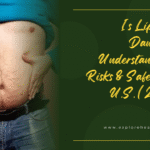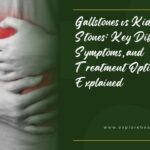Imagine turning on your kitchen faucet only to hear that the water flowing out could be unsafe to drink. That’s the reality many communities across the United States have faced in recent years due to a water boil advisory. Whether it’s a burst pipe, flooding, or contamination from an aging infrastructure, boil advisories have become increasingly common, particularly in small towns and suburban areas.
In this guide, we’ll break down exactly what a water boil advisory is, why it’s issued, what steps you should take during one, and how U.S. water safety regulations in 2024–2025 are working to reduce these incidents.
What Is a Water Boil Advisory?
A water boil advisory is a public health notice that advises residents to boil their tap water before drinking, cooking, brushing teeth, or washing dishes. It is typically issued by a local or state public health department or water utility company when the safety of the public water supply is compromised.
This doesn’t necessarily mean there are harmful pathogens in your water—but that there’s a potential for contamination, and boiling water is a precautionary measure.
Why Are Water Boil Advisories Issued?
There are several reasons a boil water notice might be issued. These include:
- Water main breaks or leaks
- Flooding or natural disasters that impact water treatment plants
- Loss of water pressure, which can allow bacteria to enter the system
- Infrastructure failures, such as aging pipes or pump station breakdowns
- Routine testing revealing unsafe levels of bacteria or parasites
In 2024 alone, over 2,300 boil water advisories were reported across the U.S., according to the Environmental Protection Agency (EPA). Many of these occurred in rural or underserved communities with outdated water infrastructure.
Types of Boil Water Notices
Understanding the differences between the types of advisories is important for how you respond:
1. Precautionary Boil Water Advisory (PBWA)
This is the most common type. Issued when there’s a risk but no confirmed contamination. For example, after a water main break or during repairs.
2. Mandatory Boil Water Notice (MBWN)
Issued when tests confirm the presence of harmful microorganisms like E. coli, Giardia, or Cryptosporidium.
How to Respond During a Water Boil Advisory
If a water boil advisory is issued in your area, here’s what you should do to protect your health and safety:
Boil Water Properly
- Bring tap water to a rolling boil for at least one minute (three minutes at elevations above 6,500 feet).
- Allow water to cool before using it.
- Use only boiled or bottled water for:
- Drinking
- Brushing teeth
- Cooking or food prep
- Washing fruits and vegetables
- Making ice
- Preparing baby formula
- Drinking
Avoid Using Tap Water for These Activities:
- Washing dishes (unless using a dishwasher with a sanitizing cycle)
- Showering infants or those with open wounds
- Filling pet bowls (use bottled or boiled water)
What Happens After the Advisory Is Lifted?
Once testing confirms the water is safe again, the local authority will lift the advisory. However, you should still take some precautions:
- Flush your pipes by running cold water taps for at least 5 minutes
- Discard any ice made during the advisory
- Replace water filters, especially in refrigerators and under-sink systems
- Sanitize appliances, such as coffee makers and water dispensers
The CDC offers additional post-advisory safety guidance here.
Health Risks of Ignoring a Boil Advisory
Drinking contaminated water can lead to a range of illnesses, including:
- Gastroenteritis
- Nausea and vomiting
- Diarrhea
- Cramping
- Fever and fatigue
Children, the elderly, and individuals with compromised immune systems are at higher risk for severe complications. That’s why it’s essential to follow boil notices even if the water looks clean.
How Are Water Quality and Advisories Regulated in the U.S.?
The Safe Drinking Water Act (SDWA) empowers the EPA to set national standards for drinking water quality. Each state enforces these standards through local water authorities. When a system fails to meet required microbial standards, the EPA mandates public notification—often via a boil water advisory.
New Regulations in 2025
As of 2025, new federal funding and policies are aimed at improving infrastructure resilience and reducing boil notices:
- Bipartisan Infrastructure Law (BIL) allocated over $50 billion to update public water systems
- EPA’s Lead and Copper Rule Improvements (LCRI) now require faster public notification timelines and improved testing
- State-level policies in Michigan, Texas, and Louisiana mandate backup power for water treatment plants to prevent outages during storms
For more information on current regulations, visit EPA’s Safe Drinking Water page.
U.S. Cities That Faced Boil Water Advisories Recently
Boil water notices are not limited to rural areas. In the last two years, major urban areas like:
- Houston, TX (2022 & 2024) – power outages and water pressure failures
- Jackson, MS (ongoing issues) – aging infrastructure and flooding
- Burlington, VT (2023) – stormwater overflow caused system contamination
These examples show that no community is immune, especially with the increasing frequency of extreme weather events.
How to Stay Informed During a Water Boil Advisory
Use These Tools:
- Local water authority websites
- Text and email alerts from emergency services
- State health department bulletins
- CDC Drinking Water Advisory Resources
Many counties now use Smart911, Everbridge, or similar platforms for real-time notifications.
You can also sign up for alerts from the National Weather Service and FEMA.
Building an Emergency Water Safety Kit
Being prepared before an advisory can reduce stress and risk.
Suggested items:
- One gallon of bottled water per person, per day (3-day supply minimum)
- Pot and camping stove for boiling water
- Unscented household bleach (for disinfection if boiling isn’t possible)
- Water purification tablets
- Disposable utensils and plates
- Baby formula or bottled baby food (if applicable)
Conclusion
A water boil advisory is more than a minor inconvenience—it’s a crucial public health warning that can prevent serious illness. As aging infrastructure, climate change, and severe weather events increase the likelihood of boil notices across the United States, staying informed and prepared has never been more important.
The good news? Boiling water is a simple, effective method to ensure your family stays safe. By understanding the reasons for advisories, following correct procedures, and preparing in advance, you can confidently navigate any water emergency.
If your community is affected by a water boil advisory, follow your local health department’s instructions and share verified information with neighbors. Stay prepared by signing up for emergency alerts and keeping a water safety kit at home. Visit the CDC’s drinking water advisory hub for the latest updates.
About ExploreHealthToday.com
ExploreHealthToday.com was created to be a one-stop resource where readers can find up-to-date, well-researched articles on a variety of health topics. From nutrition and wellness to lifestyle and mental health, we strive to provide reliable information to help you make informed decisions about your well-being.
We believe that good health starts with good information, and our mission is to empower our readers with knowledge they can trust.
Visit us at ExploreHealthToday.com to learn more.





